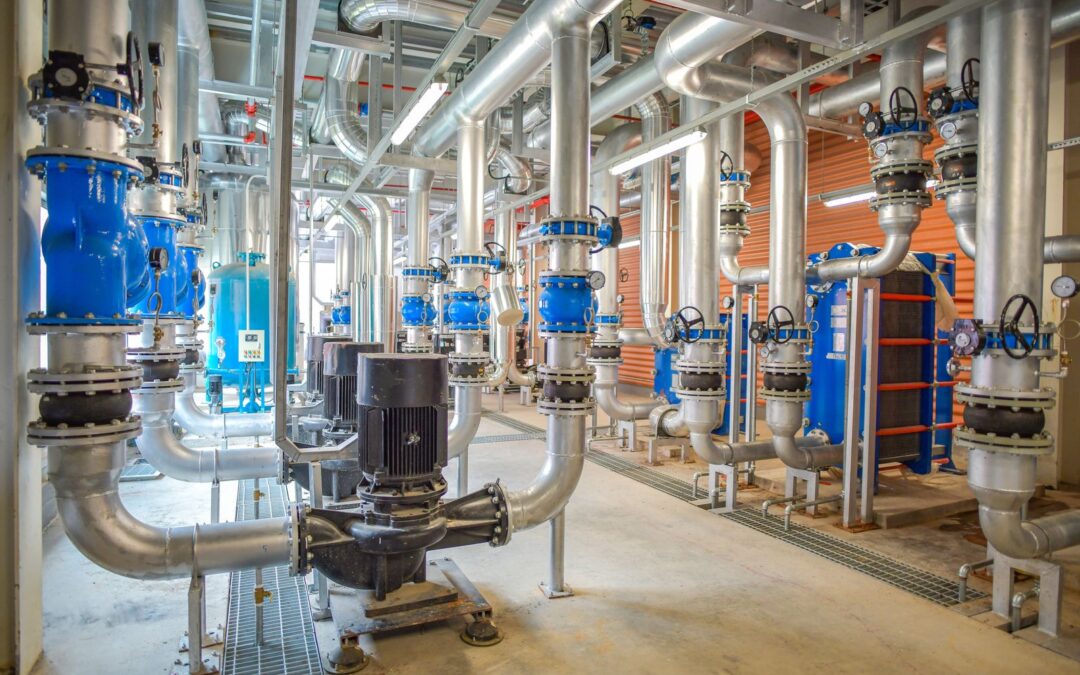Commercial boilers work by burning fuel and then extracting the heat for the building’s heating purposes. There are two types of boilers used in commercial buildings, condensing and non-condensing boilers. But what are the differences between the two types and which is best for your building?
Boilers are a core part of a building’s heating system. Boilers typically provide heat to the building by heating water or creating steam that is dispersed through pipes that travel through the building. Boilers can also be used to provide hot water for sinks and other uses. Since they play such a crucial role in providing heat and hot water in commercial buildings, their operation translates directly to the energy efficiency and comfort of a building.
Condensing Boilers
Condensing boilers are the most energy-efficient of the two options as they’re designed to capture heat normally lost to exhaust gases. These hot exhaust gases are passed through a heat exchanger which cools the gases into condensate and extracts the heat for incoming water. This process releases latent heat which can also be used for the building. Condensing boilers also have a modulating burner which allows you to match boiler output with the building’s heating demands.
Some of the advantages of condensing boilers are their:
- Energy efficiency: Condensing boilers can achieve efficiency levels up to 98%, consume less fuel consumption, and have lower energy costs.
- Environmental benefits: Condensing boilers are more environmentally friendly than non-condensing boilers because they produce fewer emissions, contributing to a smaller carbon footprint for the building.
- Potential for lower operating costs: While the purchase and installation costs are higher for a condensing boiler, the potential for lower fuel consumption may result in lower long-term costs.
Non-Condensing Boilers
Non-condensing (or conventional) boilers also work by burning fuel like natural gas or oil to heat water or steam which is circulated through a building’s heating system to provide warmth. These boilers are typically designed with a heat exchanger that transfers heat from the combustion process to water or steam. As the gases flow through the exchanger, they transfer heat to the water or steam, which is carried to the building’s radiators or other heating devices.
Once the heat has been transferred, the gases are vented outside through a flue or chimney. Unlike condensing boilers, non-condensing boilers do not have a second heat exchanger to capture the latent heat from the water vapour that is produced during combustion. As a result, they have lower efficiency ratings (levels of 80-85%) and emit more pollutants into the environment.
Non-condensing boilers are still commonly used in commercial buildings and are often the more cost-effective option for older buildings where an existing non-condensing setup is being replaced. Some of the advantages of non-condensing boilers are their:
- Lower initial cost: Non-condensing boilers are often less expensive to purchase and install, making them more financially feasible on a limited budget or when needing to minimize upfront costs.
- Simpler design: The design of non-condensing boilers is typically simpler which makes them generally easier to maintain and service.
- Lack of additional equipment: Since non-condensing boilers don’t need to handle water vapour discharge, they don’t need extra equipment or additional space, often making them a more practical choice when space is limited.
When it comes to choosing between a condensing and a non-condensing boiler for a commercial building, there are several factors to consider (e.g. budget, environmental impact, and long-term energy costs). Contact Alliance Engineering today so we can review your building’s needs and recommend the best boiler setup for you!

